Abstract
We studied the dynamics of two populations of anaerobic ciliates, Plagiopyla sp. and Metopus sp., and of their potential prey, heterotrophic and phototrophic purple bacteria, in Lake Cisó throughout a 1-year cycle. The abundance of both ciliates was very low (less than 2 individuals per ml). During mixing, Plagiopyla ciliates exhibited high clearance rates (about 100 nl ciliate-1 h-1), its integrated abundance increased with a net doubling time of 47 days, and its potential doubling times, as calculated from the number of bacteria consumed, ranged between 5 and 8 days. During stratification, the activity of Plagiopyla ciliates was reduced and the population decreased; this was related to the higher amounts of sulfide present. The impact of predation by the Plagiopyla population on bacterioplankton was found to be insignificant, less than 0.1% of bacterial biomass consumed per day. Thus, anaerobic ciliates cannot control the bacterioplankton in Lake Cisó because of both the low abundance over the period studied and the low feeding rates during certain periods. A review of available field studies suggests that this conclusion can be extrapolated to most other anoxic systems.
Full text
PDF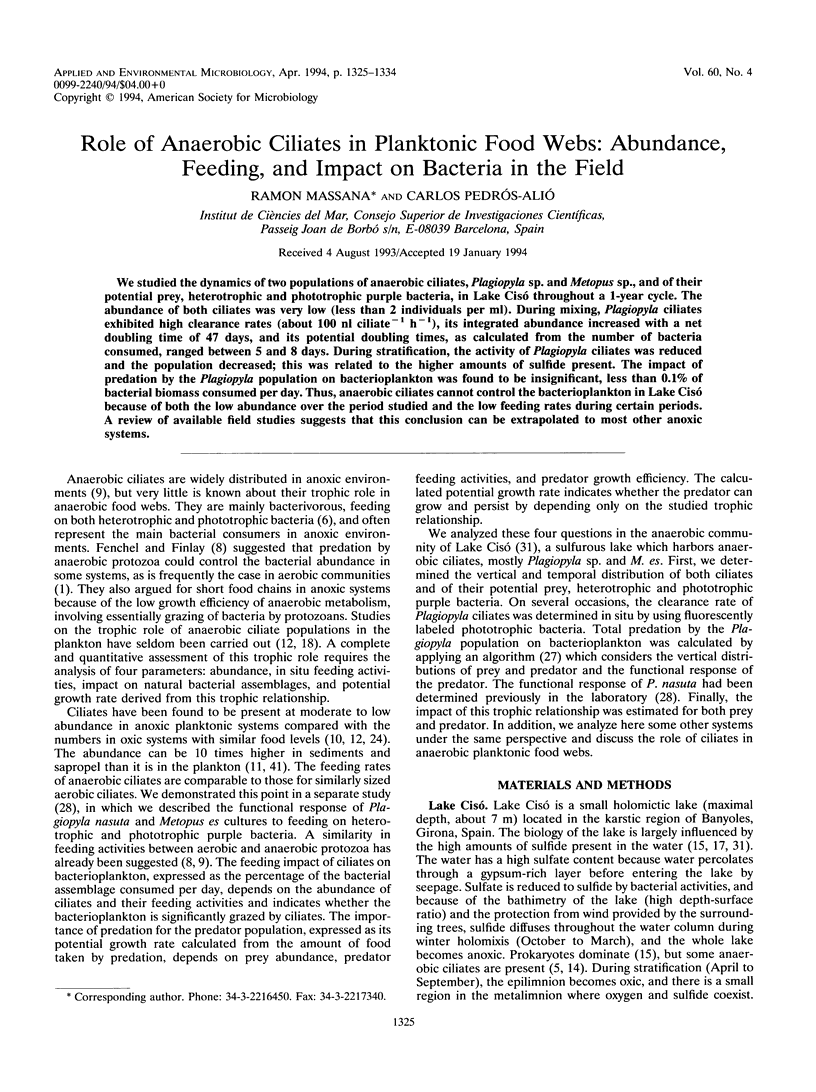
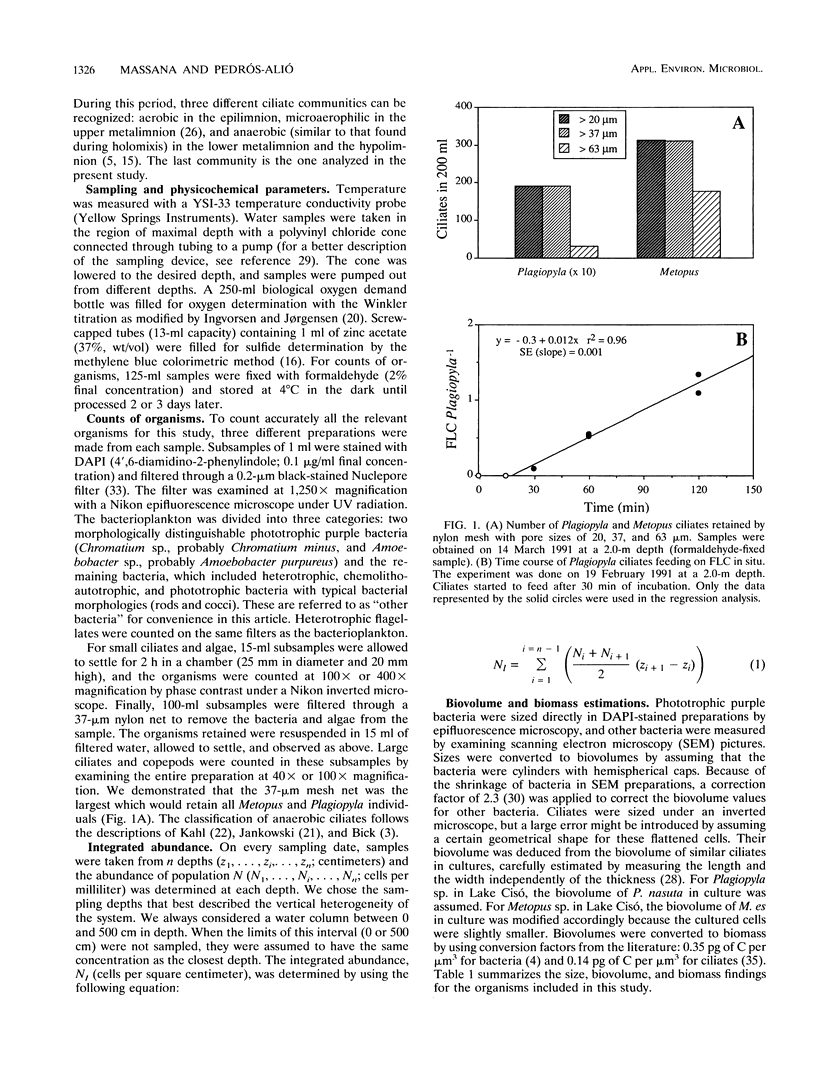
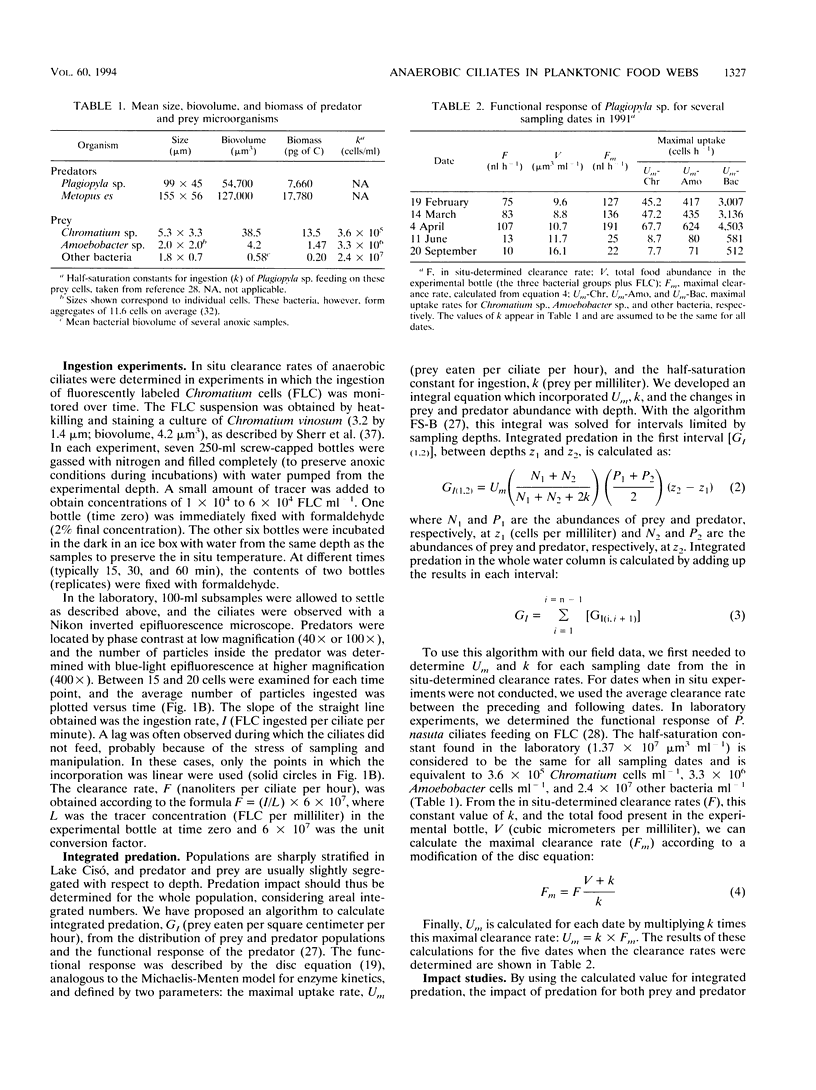
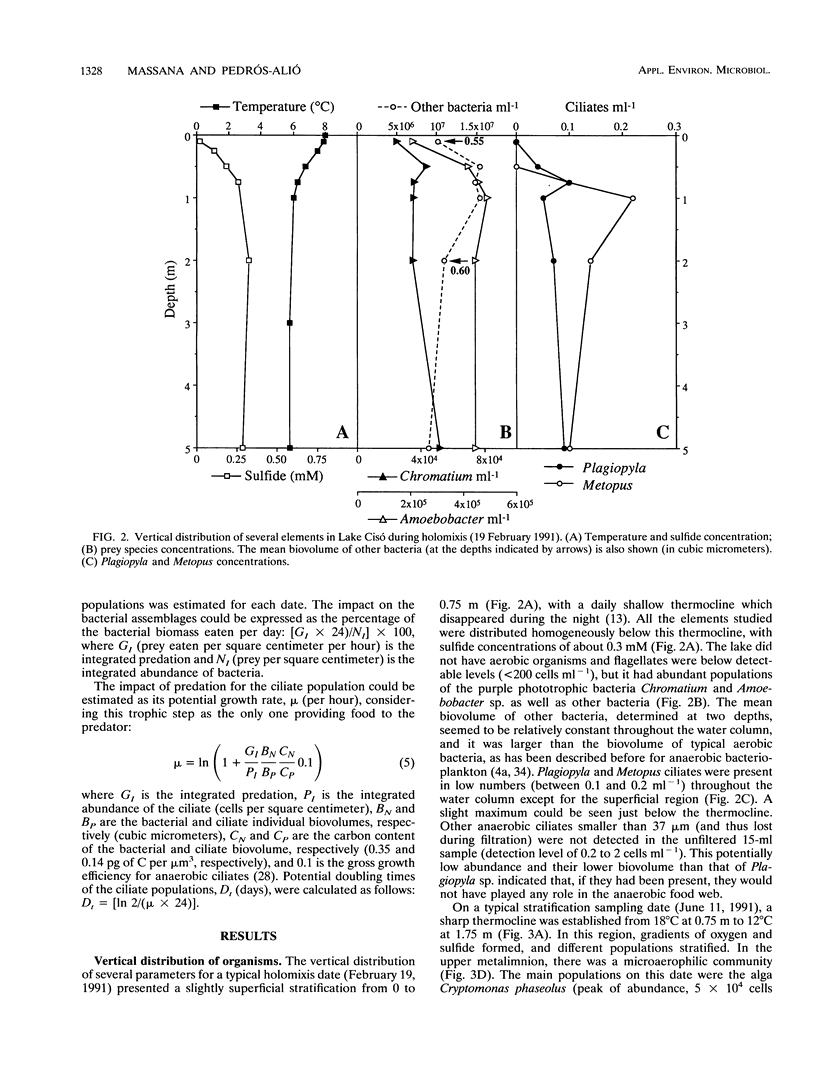
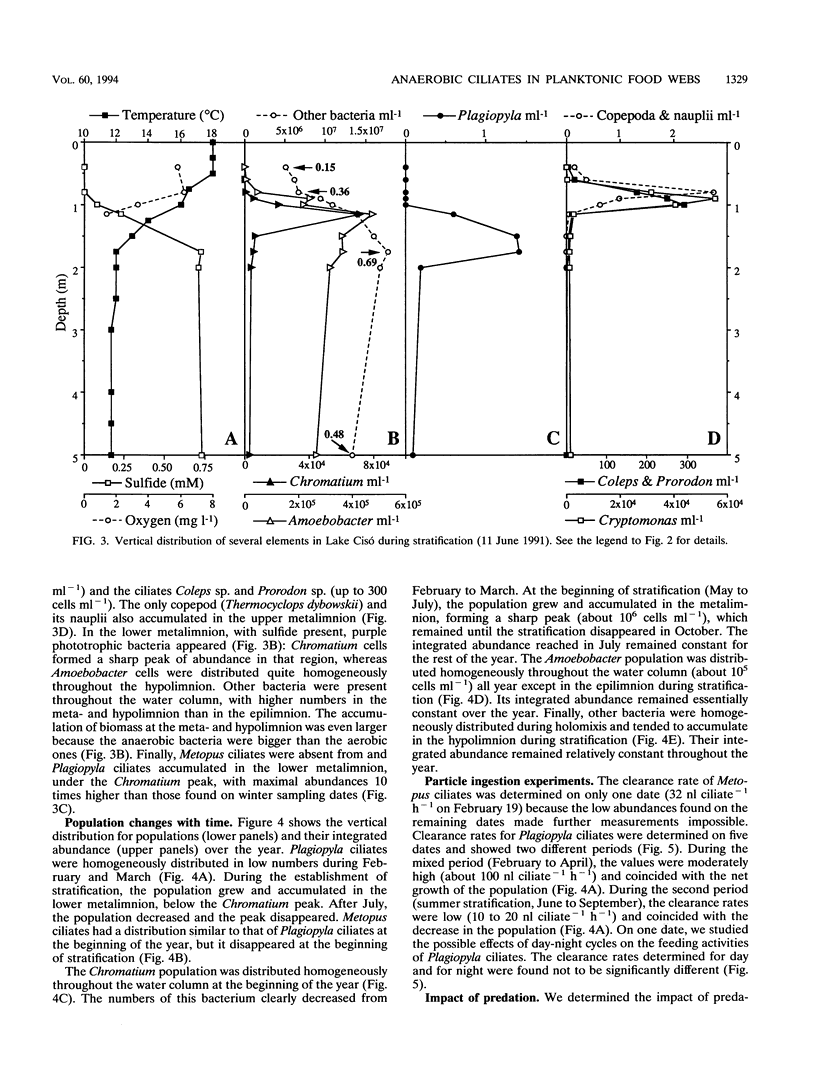
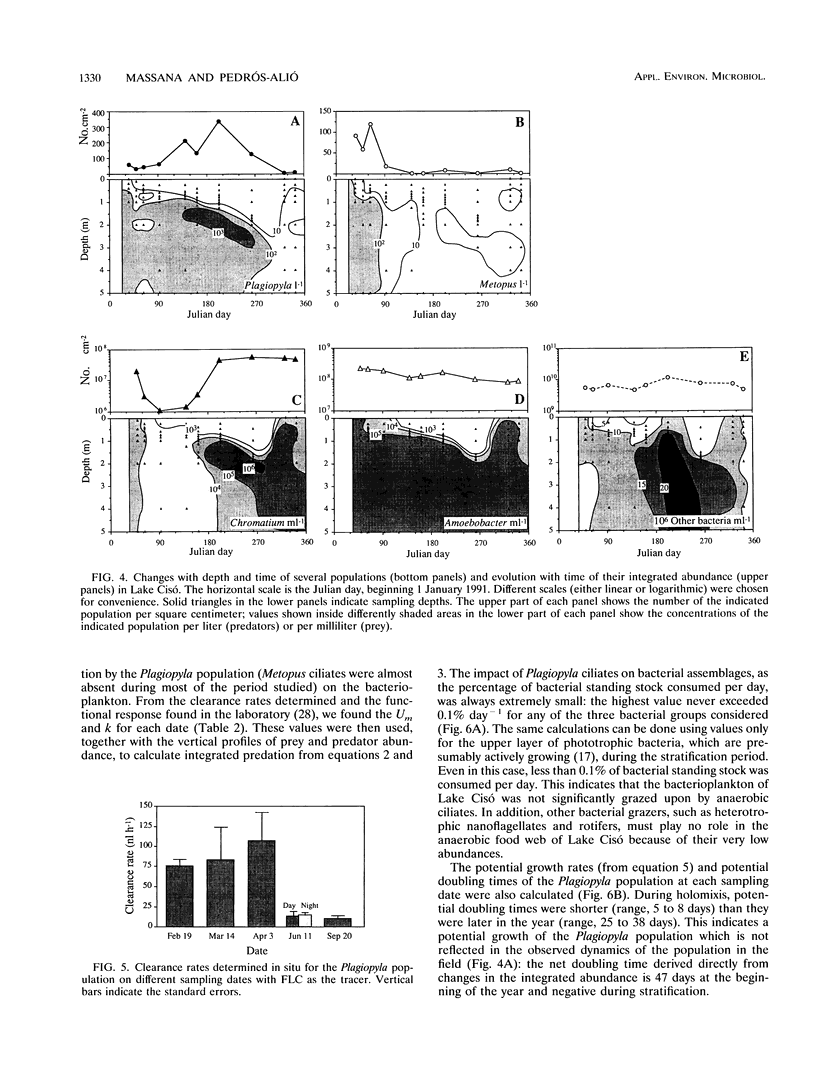
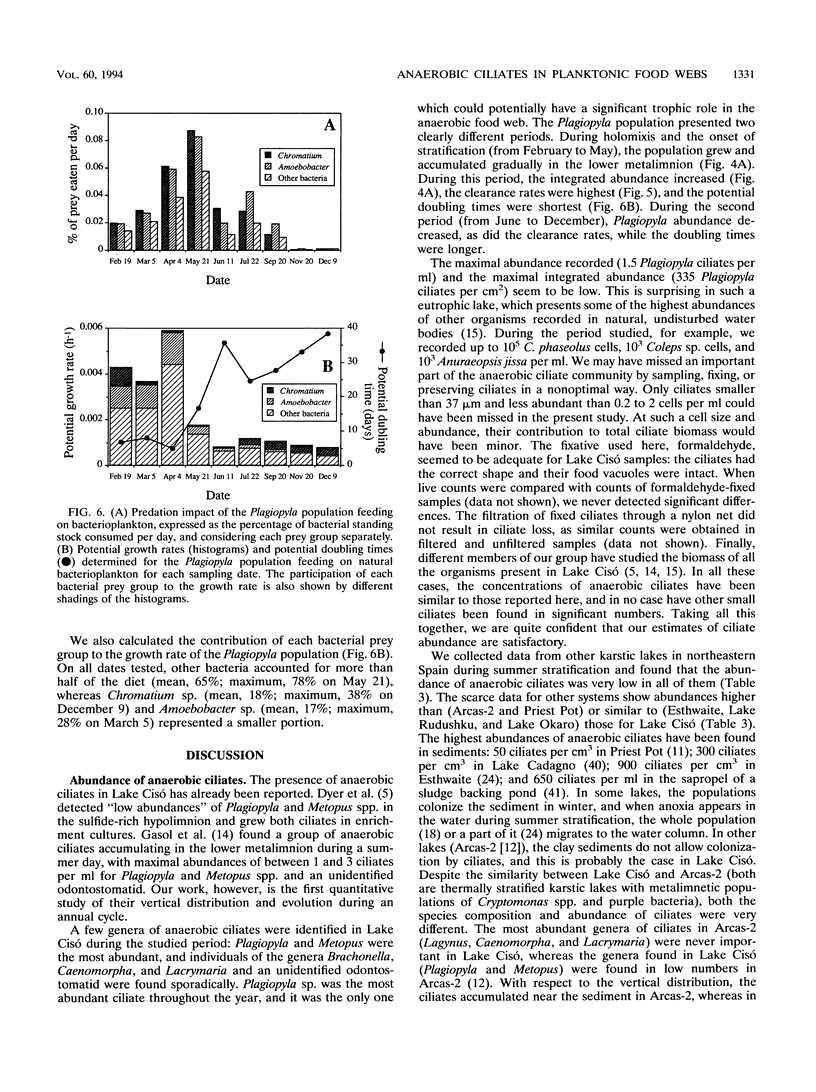
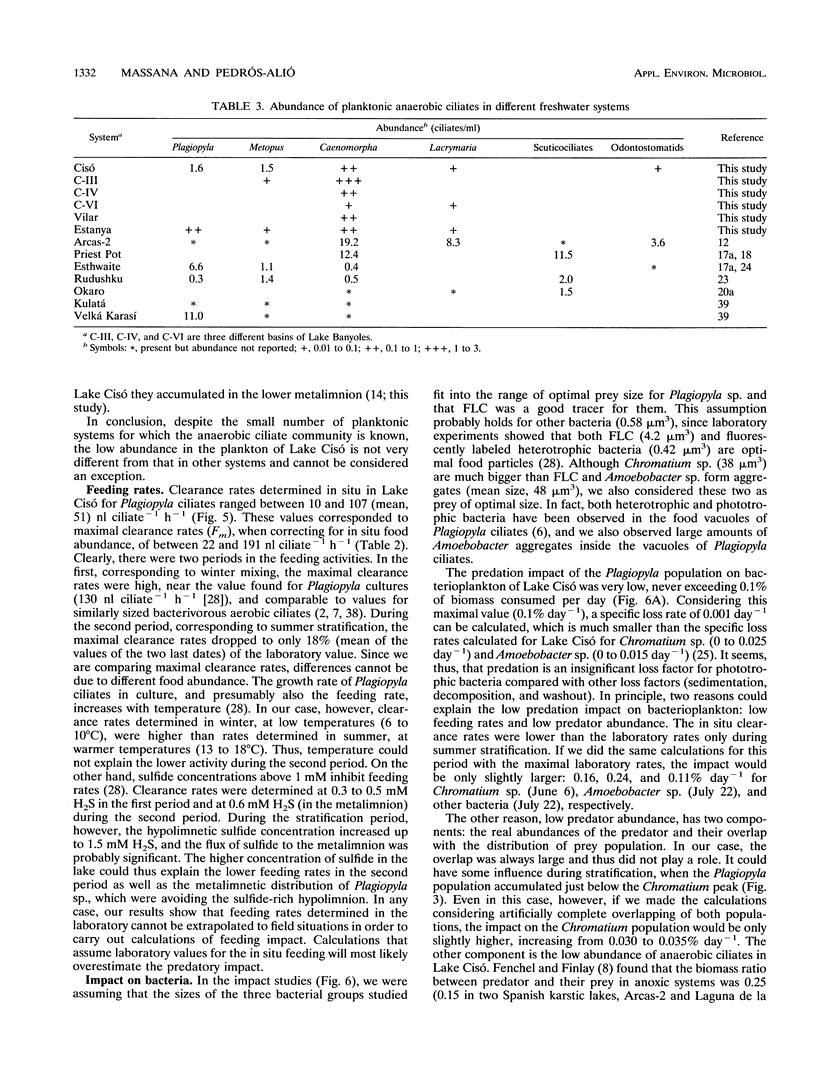
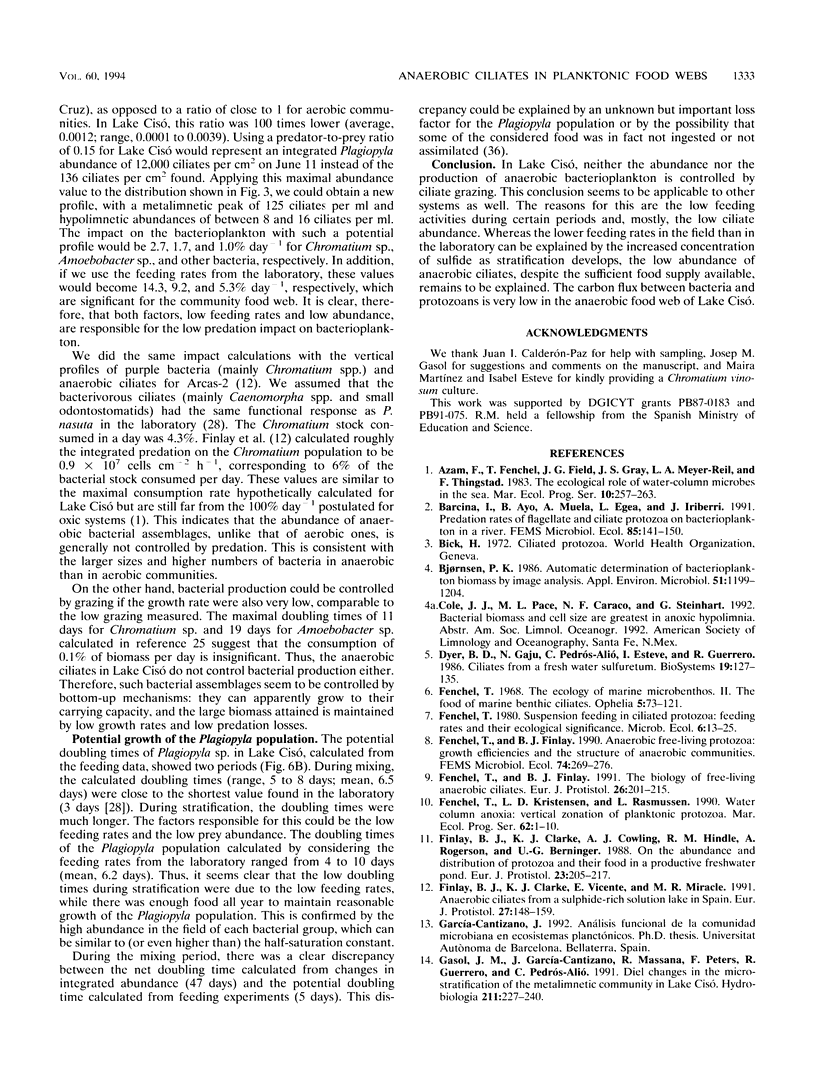

Selected References
These references are in PubMed. This may not be the complete list of references from this article.
- Bjørnsen P. K. Automatic determination of bacterioplankton biomass by image analysis. Appl Environ Microbiol. 1986 Jun;51(6):1199–1204. doi: 10.1128/aem.51.6.1199-1204.1986. [DOI] [PMC free article] [PubMed] [Google Scholar]
- Dyer B. D., Gaju N., Pedrós-Alió C., Esteve I., Guerrero R. Ciliates from a fresh water sulfuretum. Biosystems. 1986;19(2):127–135. doi: 10.1016/0303-2647(86)90025-0. [DOI] [PubMed] [Google Scholar]
- Massana R., Stumm C. K., Pedrós-Alió C. Effects of temperature, sulfide, and food abundance on growth and feeding of anaerobic ciliates. Appl Environ Microbiol. 1994 Apr;60(4):1317–1324. doi: 10.1128/aem.60.4.1317-1324.1994. [DOI] [PMC free article] [PubMed] [Google Scholar]
- Montesinos E., Esteve I., Guerrero R. Comparison between direct methods for determination of microbial cell volume: electron microscopy and electronic particle sizing. Appl Environ Microbiol. 1983 May;45(5):1651–1658. doi: 10.1128/aem.45.5.1651-1658.1983. [DOI] [PMC free article] [PubMed] [Google Scholar]
- Sherr B. F., Sherr E. B., Fallon R. D. Use of monodispersed, fluorescently labeled bacteria to estimate in situ protozoan bacterivory. Appl Environ Microbiol. 1987 May;53(5):958–965. doi: 10.1128/aem.53.5.958-965.1987. [DOI] [PMC free article] [PubMed] [Google Scholar]


